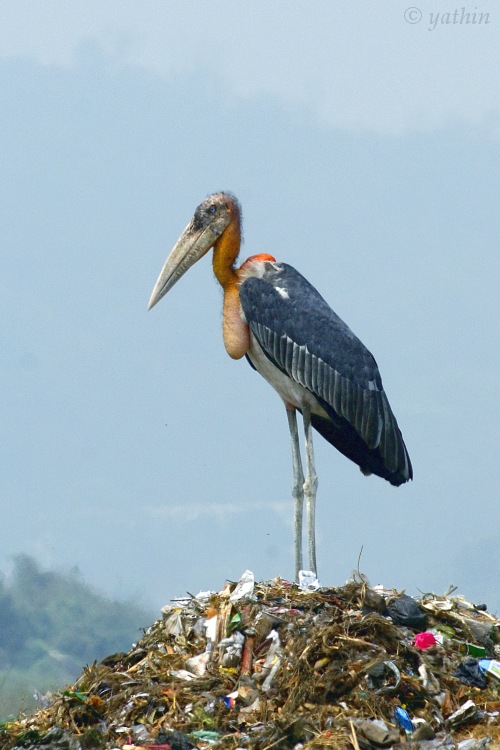Greater Adjutant (Leptoptilos dubius) - Wiki Greater Adjutant
From Wikipedia, the free encyclopedia
[Photo] Greater Adjutant (Leptoptilos dubius) in Guwahati, Assam in March 2007. Author http://en.wikipedia.org/wiki/User:Yathin_sk
| Permission is granted to copy, distribute and/or modify this document under the terms of the GNU Free Documentation License, Version 1.2 or any later version published by the Free Software Foundation; with no Invariant Sections, no Front-Cover Texts, and no Back-Cover Texts. A copy of the license is included in the section entitled "GNU Free Documentation License". |
The
Greater Adjutant,
Leptoptilos dubius is a large wading bird in the
stork family
Ciconiidae. It formerly bred in southern Asia from Pakistan and India, Sri Lanka east to Borneo, but is now restricted to two separate small breeding populations; in Assam and Cambodia. In winter, this species migrates south to Vietnam, Thailand and Myanmar.
The
Greater Adjutant is a huge bird, typically 145-150 cm (57-60 in) tall with a 250 cm (99 in) wingspan. There are no records of the weight of wild
birds, but they may be the heaviest species of
stork. Its upper body and wings are black, but the belly and undertail are off-white or pale grey. The pink head and neck are bare like those of a vulture. The yellow bill is long and thick. Juveniles are a duller version of the adult.
Most
storks fly with neck outstretched, but the three
Leptoptilos species retract their neck in flight like a heron.
The
Greater Adjutant breeds in tropical wetlands. It builds a stick nest in trees and lays between two to four eggs which are incubated by both parents for 28-30 days to hatching. It often forms small colonies.
The
Greater Adjutant, like most of its relatives, feeds mainly on frogs and large insects, but also young
birds, lizards and
rodents. It will also eat carrion, for which its bare head and neck is an adaptation, and will feed in human refuse dumps.
Loss of nesting habitat and feeding sites through drainage, pollutions and disturbance, together with hunting and egg collection has caused a massive decline in the population of this species. The current population is estimated at less than 1,000 individuals. The
Greater Adjutant is evaluated as Endangered on the IUCN Red List of Threatened Species.
http://en.wikipedia.org/wiki/Greater_Adjutant| The text in this page is based on the copyrighted Wikipedia article shown in above URL. It is used under the GNU Free Documentation License. You may redistribute it, verbatim or modified, providing that you comply with the terms of the GFDL. |
